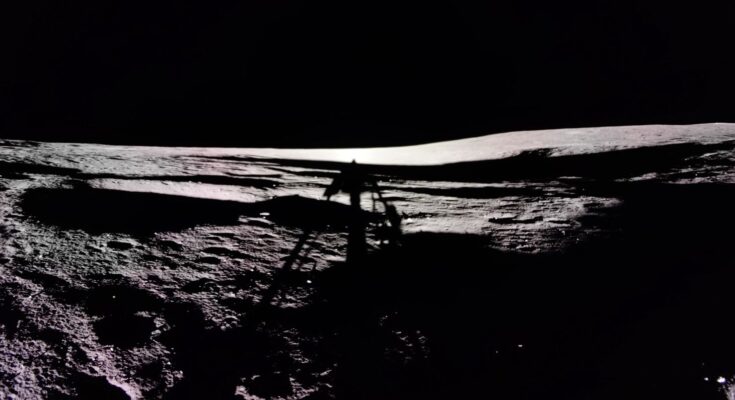“This achievement sets the record for the longest commercial operations on the Moon to date,” Firefly said in a statement.
Before going into “monument mode”—a state where the Blue Ghost lander is expected to remain dormant on the Moon’s surface for the foreseeable future—it sent a final farewell message.
“Mission mode change detected, now in Monument Mode; Goodnight friends,” the spacecraft’s message read, according to a post from Firefly on the social media platform X.
“I will hold vigil on this spot in Mare Crisium to watch humanity’s continued journey to the stars. Here, I will outlast your mightiest rivers, your tallest mountains, and perhaps even your species as we know it,” the message continued. “But it is remarkable that a species might be outlasted by its own ingenuity. Here lies Blue Ghost, a testament to the team who, with the loving support of their families and friends, built and operated this machine and its payloads.”
Blue Ghost’s mission on the Moon was a remarkable feat, especially considering the challenges of operating during lunar night, when temperatures can fluctuate dramatically, from 250°F (121°C) to as cold as -280°F (-173°C). As lunar night fell, the lander was tasked with capturing 4K video of the lunar horizon glow—a stunning phenomenon previously witnessed by Apollo astronauts, where moon dust particles seem to levitate around the lunar sunset.
NASA and Firefly are scheduled to share more details about these observations at a news conference on Tuesday at 2 p.m. ET (1 p.m. CT).
Additionally, Blue Ghost had the rare opportunity to witness a lunar eclipse last week, where Earth’s shadow briefly plunged the lander into darkness. However, it soon observed the beautiful “diamond ring effect” as the Sun peeked out from behind our planet.
From Earth, the lunar eclipse appeared as a “blood moon,” casting a reddish-orange hue over our closest celestial neighbor.
Other Private Sector Moon Landers Fail
Firefly has hailed its mission as “the first fully successful commercial Moon landing” in history. This designation comes in contrast to the efforts of Intuitive Machines, another Texas-based company. Their Odysseus lander became the first commercial spacecraft to soft-land on the Moon last year. However, it landed sideways, causing significant communication issues and leading to an early end to the mission.
Intuitive Machines’ second lander, Athena, touched down just days after Blue Ghost, but suffered a similar fate, landing on its side near the Moon’s south pole. Both of Intuitive Machines’ landing sites were in the Moon’s rugged southern region, known for its impact craters and other challenging terrain.
Several commercial companies—such as the US-based Astrobotic Technology, Japan’s Ispace, and Israel’s SpaceIL—had previously attempted and failed to soft-land vehicles on the Moon.
For decades, such missions were considered too technologically challenging and costly for the private sector.
Both Intuitive Machines and Firefly conducted their lunar lander missions through NASA’s Commercial Lunar Payload Services (CLPS) program, which encourages the business sector to take the lead in lunar exploration.
Firefly received a $101.5 million fixed-price contract for its mission.
Through the CLPS program, NASA aims to establish a fleet of private sector-developed spacecraft capable of robotic lunar exploration—faster and more affordably—before the agency returns astronauts to the Moon later this decade.
“Our team may appear younger and less experienced than many of the nations and companies that attempted Moon landings before us, but the support we share with one another is what drives the hard work and determination to find every solution that made this mission a success,” said Will Coogan, Blue Ghost’s chief engineer, in a statement.






